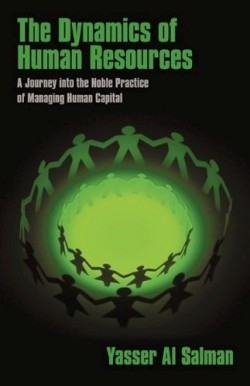The Dynamics of Human Resources
A Journey into the Noble Practice of Managing Human Capital
The Human Resources function is, in many ways, the one most tied to the success of an organization, because it deals with that organization’s most valuable resource: its people. Yet HR departments are sometimes misunderstood, occasionally ridiculed, and often underappreciated.
Yasser Al Salman’s brief but well-crafted book, The Dynamics of Human Resources, is a useful, worldly perspective on why business managers should not only respect the HR function, but embrace its essential nature. “HR involves getting the best employees and sustaining and retaining the high-performing employees,” the author writes.
Al Salman offers readers a basic overview of the HR department, which includes the obvious responsibilities for employee recruitment, hiring, retention, and firing. The author broadens the HR role, however, to include corporate social responsibility (CSR), building trust between management and employees, and company image-building. The discussion of these areas is of particular interest, since they are not always associated with traditional HR functions.
Regarding CSR, for example, Al Salman lobbies for the HR department to become a reformer. He says it is “the ethical responsibility of the HR leader to give back to the society…HR needs to redefine the act of giving back.” He also believes that “the HR department needs to do its bit through in-house governance, organizational policy-making, and contributions to the improvement of the civic mentality.” This is an interesting and provocative view that is rarely expressed in such noble terms.
Al Salman believes that “HR professionals must also work as ‘change advocates.’” The HR manager, he writes, “must be highly innovative, be willing to take risks, and possess strong organizational capability.” Ultimately, he believes, the HR department should be based on equity, justice, and respect for people.
Al Salman has more than a decade of experience in various HR roles in the Middle East. He directly addresses some of the things that can destroy an HR manager’s credibility, including “acting as an apologist for management” and “focusing on the turf instead of the mission.”
When it comes to corporate image-building, Al Salman sees the HR manager as taking on a new role. To support the company image, the department leader must be a strategic partner, an employee champion, and a change agent.
The book doesn’t offer supporting case studies or industry statistics. Instead, Al Salman offers an impassioned plea for senior business executives to find value in supporting a vibrant, forward-thinking HR department. The author aims to redefine HR’s role and significantly raise the stakes for its existence as a crucial business function. The Dynamics of Human Resources is a call to arms of sorts—a sound argument for the elevation of HR to a strategic level of primary importance in an organization.
Disclosure: This article is not an endorsement, but a review. The publisher of this book provided free copies of the book and paid a small fee to have their book reviewed by a professional reviewer. Foreword Reviews and Clarion Reviews make no guarantee that the publisher will receive a positive review. Foreword Magazine, Inc. is disclosing this in accordance with the Federal Trade Commission’s 16 CFR, Part 255.

